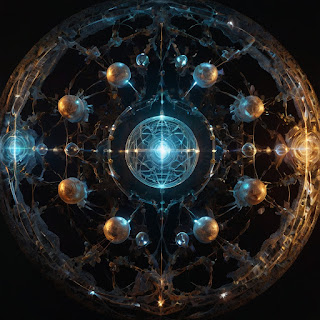Our Echoes campaign is shaping up to be unusual, with our characters only really revealed at the end of the 3rd session, and the players learning a lot more about the three echoes (worlds in the multiverse) that we'll find ourselves jumping to :
Ganym -- the Easter European-inspired steampunk setting;
Gaoshu -- the China-inspired steampunk setting;
Amitava -- the Persia/India-inspired steampunk setting.
And we'll be learning a lot about Crests, those things that allow us to bend the rules of reality and do astounding things!
But here's what we know so far about them:
On Crests, Their Acquisition, and Their Expression
definition of Aspects
In the various Milieus of Echoes, everyone is born under the Aspect of a certain Element, which grants them certain gifts. For the common run of people, these are simple things, such as being born under the Rain Aspect of Water, and thus not getting sick from being caught in the rain, or perhaps feeling particularly happy when it rains.It’s important to note that no one is born under the Element of, say, Water, but only under an Aspect thereof—Rain or Dew or Frost, like that. In a sense, it may be said that the Elements do not exist in and of themselves, but only as collective terms for their Aspects, in the same way that the word ‘rice’ does not really exist in Filipino, but can be perceived as a collective term for its concrete aspects of palay (plants that the rice comes from), bigas (uncooked rice), kanin (cooked rice), and so on.
It seems that people can only be born under Aspects of Elements which are considered ‘common’ to their place of birth. More elevated Aspects—as well as Attributes, which will be covered shortly—are typically acquired in the course of study as a Crest-wielder.
universal versus local
There are universal rules governing Crests; these, recorded herein, are some of them. Some Echoes also have local rules, including but far from limited to which Aspects are considered common in a given locale. Whenever there is a conflict between universal and local rules, local rules take precedence; otherwise, universal rules are in play.definition of Crests and their Components
All that an Aspect does by itself is to allow an involuntary expression of magic, as mentioned previously. In order to actively cause a desired effect, one needs a Crest.Think of Aspects as nouns, and Crests as sentences. You may possess the noun ‘Rain’, but you need a whole sentence to tell the universe you want to ‘Deluge my enemies in Rain!’ So Crests are composed of both Aspects and Attributes, which are modifiers we can equate to verbs, adjectives, etc., which define things like range and area of effect.
A Crest, therefore, is a linkage of at least one Aspect and a flexible number of Attributes—we call these Aspects and Attributes, collectively, Crest Components—the effect of which depends on (among other variables) what Aspects are incorporated, how they are structured, the intent of the Crest-wielder, and the manner of deployment.
Crest deployment
There are two types, one of which has two subtypes.- Empowering – The Crest-wielder channels the power of Crest Components to fuel physical combat. There is no associated cost, other than time spent.
- Expressed – The Crest-wielder assembles Crest Components to achieve a magical effect, in one of two ways:
- Invoked – A Crest is drawn on the spot, typically manifested as an intricate, branching halo surrounding the Crest-wielder’s upraised index and middle fingers. This is costly in terms of both Mana and Hit Points.
- Inscribed – A Crest is inscribed beforehand on some surface, and activated when needed, for either single or multiple use. Inscribing a Crest costs Mana and materials, but activating an Inscribed Crest costs only 1 Mana.


Is this a homebrew system, a variant of FATE, or something else entirely?
ReplyDeleteVery cool setting!
ReplyDeleteIt's a homebrew system that's evolving. :)
ReplyDelete